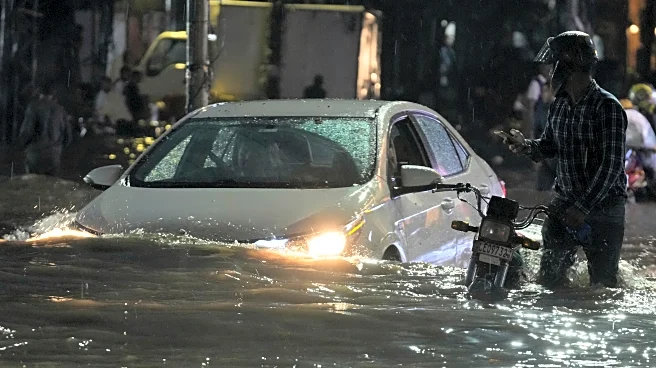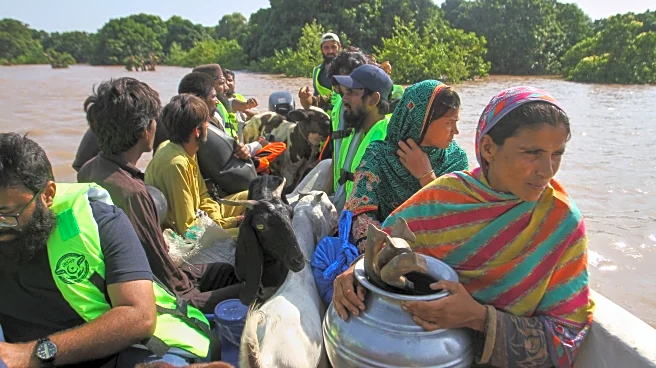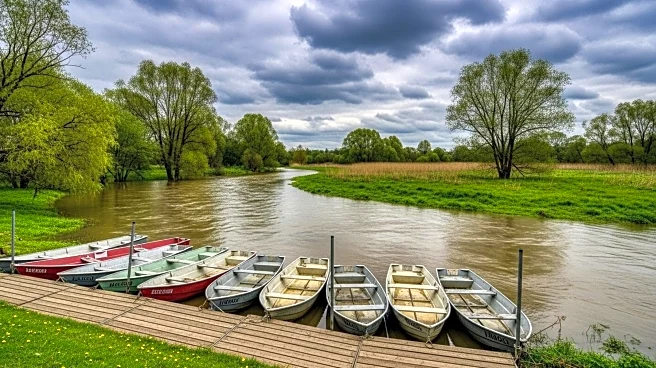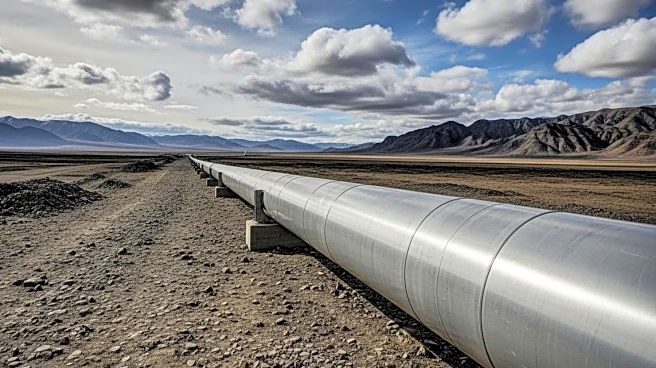What's Happening?
In Pakistan's eastern Punjab province, over 25,000 people have been evacuated from Jalalpur Pirwala due to rising river levels threatening to flood the area. The evacuation, supported by troops, follows a tragic incident where a rescue boat capsized, resulting in five deaths. The Punjab Disaster Management Authority is leading the efforts, deploying boats and volunteers to assist those stranded. The floods have affected over 4.1 million people across 25 districts, with more than 2 million already relocated. The government is utilizing thermal imaging drones to locate and rescue stranded individuals, while international aid, including supplies from Saudi Arabia and the U.S., is being provided.
Why It's Important?
The flooding in Punjab highlights the ongoing challenges posed by climate change and inadequate infrastructure in managing natural disasters. The large-scale evacuations and international aid underscore the severity of the situation and the need for robust disaster management strategies. The floods have significant implications for Pakistan's agriculture and economy, as the affected regions are key agricultural areas. The government's response and the effectiveness of international aid will be critical in mitigating the impact on the local population and preventing further loss of life. This situation also emphasizes the importance of cross-border cooperation, as water management issues with neighboring India have exacerbated the flooding.
What's Next?
The Pakistani government will continue evacuation and relief efforts, focusing on providing shelter and food to displaced families. The use of technology, such as drones, will be crucial in locating and rescuing those still stranded. As the floodwaters move downstream, additional evacuations may be necessary in southern regions like Sindh. The international community may increase aid efforts, and Pakistan might seek further assistance to rebuild and strengthen its infrastructure against future floods. Long-term, the government may need to address water management policies and improve coordination with India to prevent similar crises.













